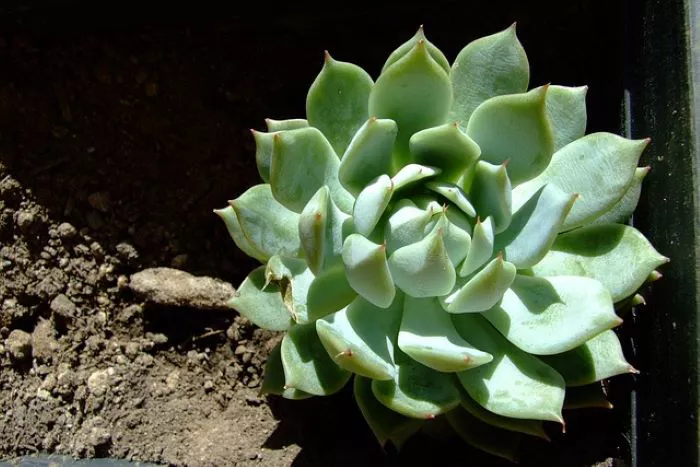Succulents are popular houseplants known for their unique shapes and vibrant colors. Many people are drawn to these plants because they are relatively low-maintenance and can thrive in various environments. However, a common question among succulent enthusiasts is how big their plants will grow. Understanding the growth potential of succulents is essential for proper care and placement in your home. This article will explore the factors that influence the size of succulents, the different types of succulents, and how to care for them to ensure healthy growth.
Factors Influencing Succulent Size
Several factors determine how big a succulent will grow. These factors include species, growing conditions, and care practices.
The species of the succulent plays a significant role in its size. Some succulents are naturally small and compact, while others can grow quite large. For example, Echeveria and Haworthia species tend to stay relatively small, often reaching heights of only six to twelve inches. In contrast, species like Agave and Aloe can grow several feet tall and wide.
Growing conditions also affect the size of succulents. Light, temperature, humidity, and soil quality are all critical factors. Succulents thrive in bright, indirect light. Insufficient light can lead to elongated growth, known as etiolation, which results in taller, weaker plants. Conversely, providing optimal light conditions can promote healthy, compact growth.
Temperature and humidity levels also impact succulent growth. Most succulents prefer warm conditions and low humidity. Extreme temperatures, either too hot or too cold, can stunt growth or damage the plant. Well-draining soil is crucial for healthy root development. Poor soil conditions can lead to root rot or other growth issues.
Care practices, such as watering and fertilizing, are vital for maintaining healthy succulents. Overwatering can cause roots to rot, while underwatering can lead to dehydration and stunted growth. Fertilizing during the growing season can provide essential nutrients that support growth.
Types of Succulents and Their Growth Potential
Succulents come in various shapes and sizes, each with unique growth characteristics. Here are some common types of succulents and their potential sizes.
Echeveria: This popular genus includes many varieties that typically grow to be six to twelve inches tall. They form rosettes and can spread up to twelve inches wide. Echeverias are known for their colorful leaves and can produce attractive flowers.
Aloe: Aloe vera, the most well-known species, can grow up to three feet tall in optimal conditions. Other Aloe species can vary significantly in size. For example, Aloe arborescens can reach heights of six feet or more.
Agave: Agave species are known for their striking rosettes and can grow quite large. Some varieties can reach up to six feet in height and width. Agave americana, for instance, can grow to be a stunning centerpiece in a garden.
Sedum: Sedums are diverse and can vary in size. Low-growing varieties may only reach a few inches tall, while others can grow up to two feet. Sedum morganianum, commonly known as burro’s tail, is a trailing succulent that typically grows to about two feet long.
Haworthia: These small, rosette-forming succulents usually grow to be around six inches tall. They are ideal for indoor environments and can thrive in low light conditions.
Crassula: The Crassula genus includes many species, such as Crassula ovata, commonly known as jade plant. Jade plants can grow up to three feet tall with proper care.
Caring for Succulents to Promote Healthy Growth
To ensure your succulents reach their full growth potential, proper care is essential. Here are some tips for caring for your succulents.
Provide Adequate Light: Place your succulents in a location where they receive bright, indirect sunlight. A south or west-facing window is often ideal. If you notice your plants stretching toward the light, they may need more exposure.
Water Wisely: Water your succulents thoroughly but infrequently. Allow the soil to dry out completely between waterings. Overwatering is a common mistake that can lead to root rot.
Use Well-Draining Soil: Choose a potting mix specifically designed for succulents and cacti. This type of soil allows excess water to drain away quickly, preventing root issues.
Fertilize Sparingly: During the growing season, typically spring and summer, you can fertilize your succulents with a diluted, balanced fertilizer. However, avoid over-fertilizing, as this can harm the plants.
Monitor Temperature and Humidity: Keep succulents in a warm environment, ideally between 60 and 80 degrees Fahrenheit. Avoid exposing them to extreme temperature changes or high humidity levels.
Repot When Necessary: As your succulents grow, they may need to be repotted into larger containers. This is especially true for larger species like Aloe and Agave. Repotting helps provide room for root expansion and fresh soil for nutrient uptake.
Conclusion
Understanding how big your succulents will get is essential for their care and placement in your home. By considering the species, growing conditions, and care practices, you can promote healthy growth and ensure your succulents thrive. Whether you choose small, compact varieties or larger, more dramatic species, proper care will help your plants reach their full potential. By providing the right environment and attention, your succulents can become beautiful and healthy additions to your indoor or outdoor space. Enjoy the journey of growing and nurturing these remarkable plants.


